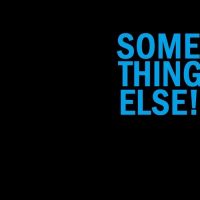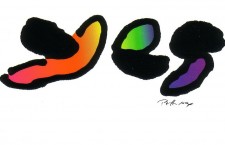Tony Kaye joins us to talk about key moments from his time in Yes, Badger and Badfinger — including “Yours Is No Disgrace,” “Hold On” and “Starship Trooper,” among others.
Go inside both the earliest triumphs of Yes, as they charted for the first time in the U.S., and Kaye’s final days in a lineup that included current Circa bandmate Billy Sherwood. Along the way, he shares unique insights as one of just three Yes members (along with Chris Squire and Jon Anderson) to have played along with each of its lead guitarists — Peter Banks, Steve Howe and Trevor Rabin.
Find out how this prog legend ended up playing a key role in the last-gasp efforts to revive the Badfinger brand with the late Tom Evans at the turn of the 1980s. And how Kaye’s early-1970s band Badger, just after taking a soulful turn alongside producer Allen Toussaint in New Orleans, ended up imploding after an opening gig with the Electric Light Orchestra …
“STARSHIP TROOPER,” with YES (THE YES ALBUM, 1971): Kaye’s chugging organ helps propel this signature three-part prog-rock triumph, which is comprised of “Life Seeker” by Jon Anderson, “Disillusion” by Chris Squire and “Wurm,” which grew out of a track called “Nether Street” from Steve Howe’s pre-Yes group Bodast. The platinum-selling Yes Album, Kaye’s last with Yes until his 90125-era return in the 1980s, would give the band its first Top 40 entry in America, and rose all the way to No. 4 in the UK.
TONY KAYE: We hadn’t been to the states. We were just a local band, touring England. It became a band at that point. It was a cool time — the first time I had used a full B3, and made it loud. I had been playing a smaller Hammond — a M-100, I think they were. Of course, they didn’t quite have what the B3 had. It was really sort of a turning point for me, in getting that sound together. That album was the beginning of the Yes legacy, really.
[SOMETHING ELSE! INTERVIEW: Co-founding keyboardist Tony Kaye talks about Yes’ earliest days, its platinum-era successes, and how a series of scary crashes almost ended the band before it even got going.]
“HOLD ON,” with BADFINGER (SAY NO MORE, 1981): Kaye toured with Badfinger in 1979 and 1983, and also appeared on this, the band’s last album with founding member Tom Evans. “Hold On,” which charted at No. 56 in the U.S., couldn’t rekindle the chart successes that Badfinger once had with the late Pete Ham, who helped the band to four consecutive hits in 1970-71 as part of the Beatles’ Apple Records stable of artists. Distraught over money woes, Evans would commit suicide in 1983. By then, Kaye had returned for Yes’ tour behind 90125.
TONY KAYE: I hadn’t realized the history of Badfinger. I was close with Tommy from the past, but he lived in England. It was only because they had come over and settled in Los Angeles for a while that it came together at all. In fact, until I read Dan Matoniva’s book (1998’s Without You: The Tragic Story of Badfinger) fairly recently, I hadn’t realized exactly what had gone down with that band. It was sad. We were out on the road, playing really shitty clubs with small audiences. It didn’t really work, from a record company point of view. There was no support at all — and Tommy was on his own. He was a pretty heavy drinker, and a slightly depressed artist. I thought actually the cover image on Say No More (a dark and mysterious figure painted by Peter Max) that was Tommy. It wasn’t supposed to be, but that was Tommy.
[SOMETHING ELSE! INTERVIEW: Joey Molland discusses Badfinger’s most memorable moments, as well as sitting in with the Beatles — and taking it, yes, day after day.]
“ENDLESS DREAM,” with YES (TALK, 1994): Though the album is best known — and often criticized — for its pop-oriented single “Walls,” Talk also made room for lengthier compositions like this one from guitarist Trevor Rabin and singer Jon Anderson. A segmented 15-minute exploration, the middle section of which gives this 1994 album its title, “Endless Dream” would be part of a project that saw Kaye make a triumphal return to the organ. Alas, it would also be Kaye’s last studio effort with the band he’d co-founded in the late 1960s.
TONY KAYE: Yes was sort of declining at that time. But I thought that was a pretty cutting-edge album, being that it was one of the first Digital Performer albums that had been recorded. It was really an experiment. And, of course, although Trevor had co-written with Jon to an extent, the band was pretty dissipated. We just came in to play our bits, and it sounded like that in a lot of ways. It was a great sonic album, and Trevor (Rabin) did a great job. Big Generator had been recorded in part with (90125 producer) Trevor Horn, and it was done in the old way of recording. So, Talk was really Trevor (Rabin)’s baby — and I thought that he did a great job. I liked the album. I was there for 100 percent of the time, because I lived close to Trevor. Obviously, it was with a record company that was unknown, and it wasn’t a major label and it probably suffered on a distribution label. Maybe the singles that came from it were maybe not to people’s liking. Yes fans didn’t want another pop single — even though the album was very much in a ’70s Yes style in a lot of ways, in that there were long pieces and intricate playing and all the rest of it. In actual fact, though, the tour of that album was really cool. The band was really good. We did some really good shows. Of course, we played it in its entirety, so it was an interesting tour. Of course, having Billy there playing all kinds of things was great. But it was the end of the road. Trevor decided to leave, and I just didn’t see the band carrying on in that configuration. It was the end of an era, so I left too.
[ONE TRACK MIND: Trevor Rabin goes in depth on his solo work, as well as standout moments with Yes like “Owner of a Lonely Heart,” “Shoot High Aim Low,” and “Changes.”]
“WHITE LADY,” with BADGER (WHITE LADY, 1974): A forgotten, funky little gem from Kaye and Badger, which was then featuring former Apple Records belter Jackie Lomax on vocals and — for this album’s title track — special guest Jeff Beck on guitar. White Lady, recorded in New Orleans with legendary producer Allen Toussaint, would unfortunately be Badger’s last. They split following an opening gig for ELO, relegating this project to an unjust obscurity — and sending Kaye, who had left Yes for Badger, on to new adventures.
TONY KAYE: It was starting to get somewhere, but I had my own band with David Foster — who was a co-writer with (founding Yes vocalist) Jon (Anderson). He had been the bass player in a band called the Warriors with Jon. David and I were working on stuff, and we played some gigs and got a band together, and eventually it ended up as Badger. So I went straight to doing my own thing. I did a couple of albums with Badger, and I had been to the states a couple of times and loved it here. I recorded the second album in New Orleans with Allen Toussaint — and that was an amazing experience. Badger wasn’t really doing anything, and I just picked up and left, sold everything and came to the U.S. I ended up at the Hyatt House on Sunset (Boulevard in Hollywood, California) with (late Led Zeppelin drummer) John Bonham as my cohort. We wreaked havoc on the Strip for about three months! Then, I bumped into the tour manager for David Bowie and he said: “Can you be on a plane tomorrow for Jamaica?” And I said, “Yeah — but to do what?” The next thing I knew I was rehearsing with David Bowie, and we toured behind Station to Station for two years with an amazing band. I came back to Los Angeles, and started working with Michael Des Barres in Detective. We got signed by Led Zeppelin and did a couple of tours, supporting Kiss mainly.
[SOMETHING ELSE! REWIND: Circa’s ‘And So On,’ from last year, marries the sounds of both tenures in Yes for co-founding keyboardist Tony Kaye — making for an atom-smashing delight.]
“YOURS IS NO DISGRACE,” with YES (THE YES ALBUM, 1971): Yes opened with the lengthiest song on its third studio project, a signal of what was to come for a band that would soon be constructing tracks that stretched across entire album sides. The track, which thumps along behind a chugging organ courtesy of co-writer Kaye, casts a hardened gaze on the idea of war — even as it moves through a series of episodic narrative twists. This would be the first song to feature guitarist Steve Howe, who has since become a stalwart with Yes.
TONY KAYE: We’d done the first two albums — Yes and Time and a Word — with (founding Yes guitarist) Peter (Banks). And as he left the band, we were starting to get a little bit of a reputation after playing around England. I was pretty much a resident of the speakeasy, our local London watering hole, and saw Steve Howe with his band Bodast. I talked to Steve, and brought him into the band and pretty soon, we went down to a little cottage in Devon and started writing The Yes Album. It was a big change, with Peter leaving and Steve coming in. We set up a room to rehearse, and we basically lived there. We started writing little bits, and everybody brought in their own things. It was a gradual, building thing. It turned out to be the breaking album for the band. It was a special time. It was just one of those moments where you finally knew what you were doing, and got it together in one place — outside of London, in a very quiet atmosphere. It came together, and it was a pretty important album.
- Nick DeRiso’s Best of 2015 (Rock + Pop): Death Cab for Cutie, Joe Jackson, Toto + Others - January 18, 2016
- Nick DeRiso’s Best of 2015 (Blues, Jazz + R&B): Boz Scaggs, Gavin Harrison, Alabama Shakes - January 10, 2016
- Nick DeRiso’s Best of 2015 (Reissues + Live): John Oates, Led Zeppelin, Yes, Faces + others - January 7, 2016



